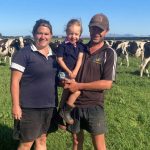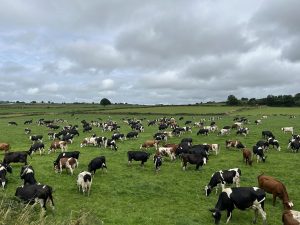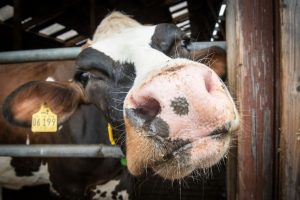
Laura Burke believes that if agriculture in Ireland continues to operate the way it is currently doing, it will not meet its environmental targets.
“We can’t keep doing the same things and expect a different result and that’s the long and the short of it – so transformation is needed,” the EPA’s director general told Agriland for the ‘On the Record‘ series.
She believes the “increase in production” has had an impact on environment – not just in Ireland, but right across Europe and further afield.
On the Record
In an in-depth interview with Agriland (see video above), the EPA director general said: “What is agriculture going to look like in the future so that it’s still thriving, still productive but it is not having this disproportionate impact on the environment; the sector needs to transform and we can’t keep doing the same things and expect a different result.”
She said it was not “an all or nothing” scenario for Irish farmers but there were key questions that now needed to be answered by agriculture in Ireland.
“How do we diversify within farms so that there is a good solid income as well for farmers because that’s also key. All of us need to work for a living, so how do you support, for example, results-based payments?
“It’s going to be a combination of policies but also really the sector kind of trying to say… okay, where’s our unique selling point? A lot of it is that clean green image of Ireland and therefore how do we protect and improve that?” Burke said.
She said that the EPA acknowledges the concerns within the farming community that they are being asked to change how they have operated for generations.
The director general of the agency said that change is “concerning and frightening” for farmers and that there must be “support and guidance and the right incentives” to support the farming sector.
She believes it could be “really positive” but no one should underestimate the challenges which lie ahead in relation to environmental targets and issues.
Dairy herd
The EPA director said that there has been a “very significant increase over the last number of years in dairy cow numbers. We’re seeing the impact of that not only on greenhouse gas emissions, and they have been increasing year on year”.
“In fact, when you compare back to 1990, which is the baseline we always compare, we’re now at 15% increase in greenhouse gas emissions from 1990.
“We’re 19% increased from 2011 – they’re going in the wrong direction and that is primarily driven by the increase in dairy numbers.”
She said the EPA was “focussed on the outcomes and not the tools” but she believes the continued increase in the dairy herd is “unsustainable”.
“It is really a challenge the more and more animals you have, the more and more impacts you are having, each animal can be more efficient but the sum of the parts is bigger,” she continued.
“Whether a cull is the solution, whether there are other tools, it is really for the sector to be looking at – there’s never any silver bullet – and really to be looking at it strategically and saying what’s the appropriate results.”
EPA on water quality
She also outlined that the EPA this year will produce an interim report on water quality which will feed into the European Commission’s view on whether Ireland’s Nitrates Action Plan is working or not.
“From our perspective when you look at the fourth Nitrates Action Plan, it didn’t deliver on improvements in water quality; that’s the evidence, that’s the science. So whatever is being done now will need really to impact and Ireland is one now of very few countries with this derogation.
“But we will have to be able to demonstrate and it kind of comes down to the outcomes, all about the science, so this interim report that we’ve been asked to produce will be key I’m sure, in decisions into the future.”
However, the EPA director believes there is “common ground” between farming and the EPA.
“I think there is huge opportunity for us to work together and to understand each other, understand the challenges and the barriers – because we’re all interested in the outcome we want a thriving agriculture sector,” she said.




















